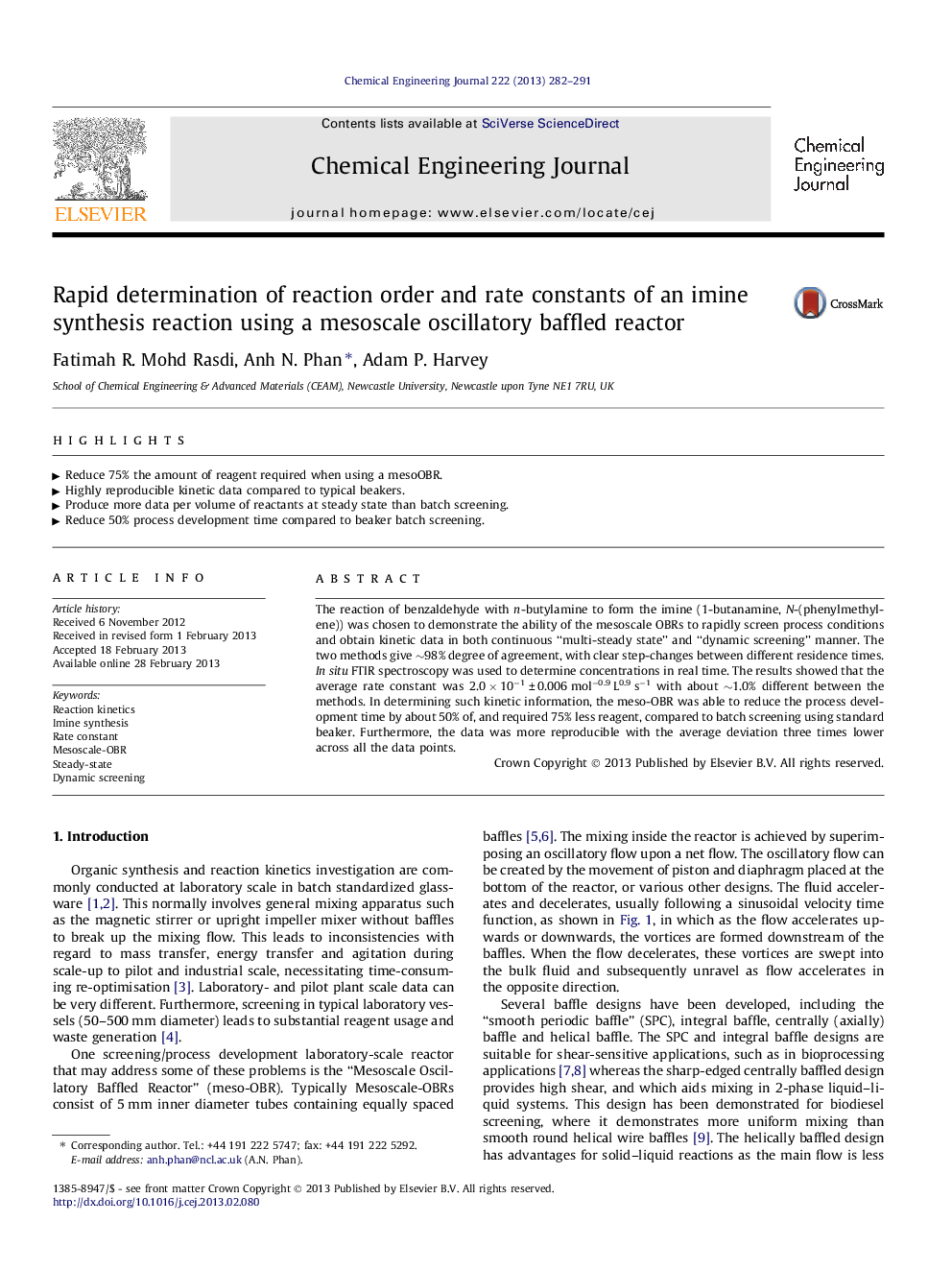| Article ID | Journal | Published Year | Pages | File Type |
|---|---|---|---|---|
| 148585 | Chemical Engineering Journal | 2013 | 10 Pages |
The reaction of benzaldehyde with n-butylamine to form the imine (1-butanamine, N-(phenylmethylene)) was chosen to demonstrate the ability of the mesoscale OBRs to rapidly screen process conditions and obtain kinetic data in both continuous “multi-steady state” and “dynamic screening” manner. The two methods give ∼98% degree of agreement, with clear step-changes between different residence times. In situ FTIR spectroscopy was used to determine concentrations in real time. The results showed that the average rate constant was 2.0 × 10−1 ± 0.006 mol−0.9 L0.9 s−1 with about ∼1.0% different between the methods. In determining such kinetic information, the meso-OBR was able to reduce the process development time by about 50% of, and required 75% less reagent, compared to batch screening using standard beaker. Furthermore, the data was more reproducible with the average deviation three times lower across all the data points.
► Reduce 75% the amount of reagent required when using a mesoOBR. ► Highly reproducible kinetic data compared to typical beakers. ► Produce more data per volume of reactants at steady state than batch screening. ► Reduce 50% process development time compared to beaker batch screening.
